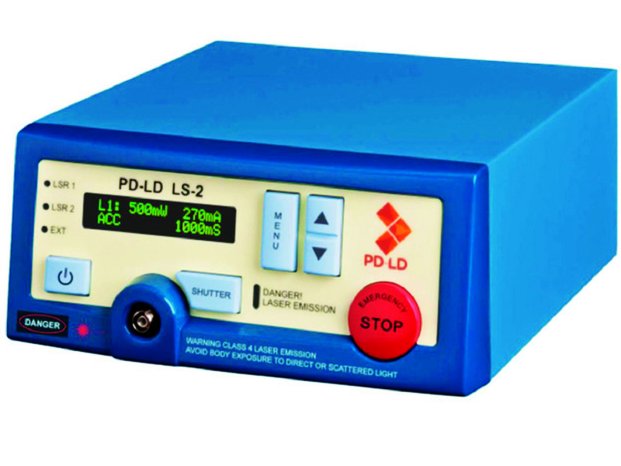The laser wavelength of the LS-1 is stabilized by the use of a volume Bragg grating (VBG) at a precision of ±0.5 nm. Across an operating temperature range of 0°C to 40°C, a wavelength stability of ±0.005 nm can be achieved. At the same time, the optical full width half maximum is reduced to <0.1 nm.
The innovative laser source LS-2 delivers a SERDS laser line pair with a wavelength difference of Dl = l2 - l1 = 0,1..1,0 nm. The wavelength tolerance here is also ±0.5 nm at a stability of ±0.005 nm. SERDS, shifted excitation Raman differential spectroscopy is a further development of the Raman spectroscopy to seperate Raman signals from the background noise. The SERDS principle is based on the excitation of the Raman effect with two wavelengths that are spectrally very close together at a distance of the full width half maximum of typical Raman lines.
The new LS-1 and LS-2 VBG-stabilized laser sources are available with the following standard wavelengths: 647 nm, 785 nm, 830 nm, and 1064 nm. Further wavelengths are available upon request. Coupling the laser beam with an optical power of up to 1 W is done using an FC/PC plug. The laser systems can be used immediately and are easy to operate. The parameters can be set either directly on the system or using a USB 2.0 interface.
More Information http://www.lasercomponents.com/...
Trade Shows
Photonex 2012, October, 17-18 2012, Ricoh Arena, UK, Booth D20
Opto, October 23-25, 2012, Paris Expo, Porte de Versailles, France, Hall 1
Vision 2012, Nov, 06-08, 2012, Trade Fair Centre Stuttgart, Germany, Booth 1F14
electronica 2012, Nov, 13-17, 2012, Munich International Trade Fairs, Germany, Booth A2.306


